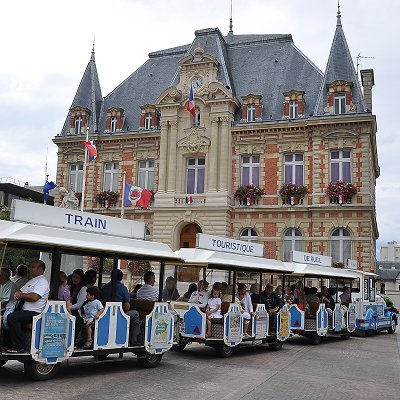
Like us on Facebook
PLACE NAMES


 
|
|
Rueil-Malmaison
|

|
|
Rueil-Malmaison was originally called simply Rueil. In medieval times the name Rueil was spelled either Roialum, Riogilum, Rotoialum, Ruolium, or Ruellium. This name is made of the Celtic word ialo (meaning "clearing, glade", "place of") suffixed to a radical meaning "brook, stream" (Latin rivus, Old French rû), or maybe to a radical meaning "ford" (Celtic ritu).
In 1928, the name of the commune officially became Rueil-Malmaison in reference to its most famous tourist attraction, the Château de Malmaison, home of Napoléon's first wife Joséphine de Beauharnais. Upon her death in 1814, she was buried at the nearby Saint-Pierre-Saint-Paul church, which stands at the centre of the city.
The name Malmaison comes from Medieval Latin mala mansio, meaning "ill-fated domain", "estate of ill luck". In the Early Middle Ages Malmaison was the site of a royal residence which was destroyed by the Vikings in 846.
The Rueil barracks of the Swiss Guard were constructed in 1756 under Louis XV by the architect Axel Guillaumot, and have been classified Monument historique since 1973. The Guard was formed by Louis XIII in 1616 and massacred at the Tuileries on 10 August 1792 during the French Revolution.
During the Franco-Prussian War of 1870, Rueil was located on the front line.
At the end of the 19th century, Impressionist painters like Pierre-Auguste Renoir, Édouard Manet and Claude Monet came to paint the Seine River which crosses the town.
Rueil is (despite the title) the principal location of the novel Loin de Rueil by the French novelist Raymond Queneau.
 Feel free to Email me any additions or corrections Feel free to Email me any additions or corrections
LINKS AVAILABLE TO YOUR SITE
| | |





